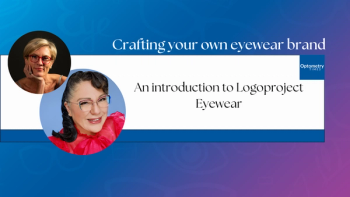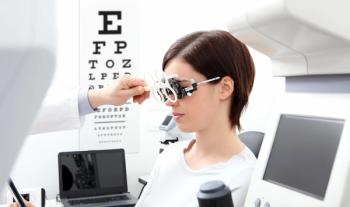
- July digital edition 2024
- Volume 16
- Issue 07
EyeCon 2024: Oluwatosin U. Smith, MD, talks about her love for research and education
From surgeon to mentor: Smith fuels her commitment to improving glaucoma care by training future ophthalmologists.
Attendees of this year’s Ophthalmology Times and Optometry Times EyeCon 2024 meeting will find 2 key changes. Traditionally held later in the year along Florida’s west coast, the event now shifts to an earlier date and moves across the state to the southeast coast. The conference will take place at the Hilton Fort Lauderdale Marina on September 27 and 28, 2024.
Peter J. McDonnell, MD, director of the Wilmer Eye Institute at Johns Hopkins University School of Medicine in Baltimore, Maryland, and Oluwatosin U. Smith, MD, partner, physician, and surgeon at the Glaucoma Associates of Texas in Dallas serve as the Ophthalmology Times cochairs for the meeting.
With meeting preparations underway, we want to offer a closer look at the individuals behind the cochair titles. In this interview with Group Editorial Director Sheryl Stevenson, Smith shares her passion for glaucoma, the value of research and education in the field, and her commitment to mentoring future generations of ophthalmologists.
To learn more about or to register for EyeCon 2024,
Video transcript
Editor's note: This transcript has been lightly edited for clarity.
Sheryl Stevenson:
We are joined today by Dr Tosin Smith, who is cochair of the Ophthalmology Times EyeCon meeting. We're looking forward to seeing you again at this year's meeting being held September 27th and 28th in Fort Lauderdale, Florida.
Before we begin talking a little about the meeting itself, I'm sure some of our audience would love to get to know you a little more. Your passion is glaucoma. You've done a lot of important research on the subject across your career. Do you have any favorite studies or pet projects that you remember fondly?
Oluwatosin U. Smith, MD:
Thank you so much, Sheryl, for having me. It's always a pleasure to get the opportunity to chat with you. First of all, I'm a partner, physician, and surgeon at the Glaucoma Associates of Texas. It's one of my favorite things to do apart from taking care of patients with glaucoma, which, of course is my everyday thing to do.
You know what has been so exciting to me in the past couple of years is just to watch the evolution in the glaucoma space, how we've moved from limited options for care for patients to one where we have so many just wonderful options, whether it's in laser treatment, minimally invasive glaucoma surgery [MIGS] options, or just new techniques and surgical options and all that new, just wonderful data that's coming out that is directing how we take care of patients earlier in the disease process.
If you ask me exactly which studies or so that I've been most excited about, of course, I would always like to chip in there the Glaucoma Associates of Texas had initiated or found the GATT [Gonioscopy-Assisted Transluminal Trabeculotomy] procedure. That was exciting. It was one of the first minimally invasive glaucoma surgeries that was done. Altogether, just being involved with all the clinical trials that have got us to where we are now, whether it's sustained-release options. I was involved with that...bimatoprost implant. Whether it's in medications...the newer medication drug classes we have in the space right now or just evolution of the MIGS procedures, whether it be with an implant or a stent versus nonimplant stent. It's just been really exciting to be involved in that revolution. Exciting times for us in glaucoma.
Stevenson:
Much of your work has been published extensively. How do you feel research has changed over the course of your career? And how would you like to see it evolve further?
Smith:
It has been like I talked about just being excited to be involved in the process of change, so to speak. I think the thought processing of how we take care of glaucoma patients has caused a change in the things that we've researched. The research process itself has not changed that much. It is what we're researching that has changed. We've moved from that place of just being stuck in the mud with trabeculectomies and tube shunts and following glaucoma patients strictly with visual fields and OCT [optical coherence tomography] came on the market.
Now to other things, earlier management or earlier treatment research and ways of diagnostics. Earlier treatment options, but more so disease. Being able to monitor disease, that's another area that I'm actually really excited about. As we start to explore those options, whether it's IOP [intraocular pressure] monitoring or visual field testing at home, there are so many things out there now that hopefully one day will become the normal ways to care for our glaucoma patients. Exciting times.
Stevenson:
You're also an educator, serving as Associate Professor of Ophthalmology at UT Southwestern Medical Center in Dallas, and you're involved with the training of glaucoma fellows. How does education inspire you?
Smith:
Education is a core of what I do. Many people don't know I was actually in academics as my first job. I worked at the University of Mississippi Medical Center [in Jackson, Mississippi] as the person who started their glaucoma department or section in ophthalmology. It's exciting to have been part of that.
I realized that educating residents and fellows is key to the future of your profession. I have a passion for doing that. I enjoy working with the fellows at UT Southwestern. You're able to teach them a skill that actually allows them when they reach out of fellowship to jump right in and be comfortable in the practice of glaucoma, which is that which they have chosen. It's not limited just to that.
I also spend time teaching as well in other ways outside whether it's with the [American] Academy of Ophthalmology or ASRS [American Society of Retina Specialists]. International education is a big part of that, too, through the Cure Glaucoma Foundation. So education is key. I always say when I get old, if I don't teach people what to do now then I'm going to be stuck with myself and it's hard to operate on yourself.
Articles in this issue
over 1 year ago
A beginner’s guide to dry eye treatment integrationover 1 year ago
Infrared imaging is an aid for patient education about GAover 1 year ago
Optometrists sing to the tune of advocacy in 2024over 1 year ago
Global dry eye by the numbersover 1 year ago
Stability is an important quality in toric lensesNewsletter
Want more insights like this? Subscribe to Optometry Times and get clinical pearls and practice tips delivered straight to your inbox.
















































.png)


